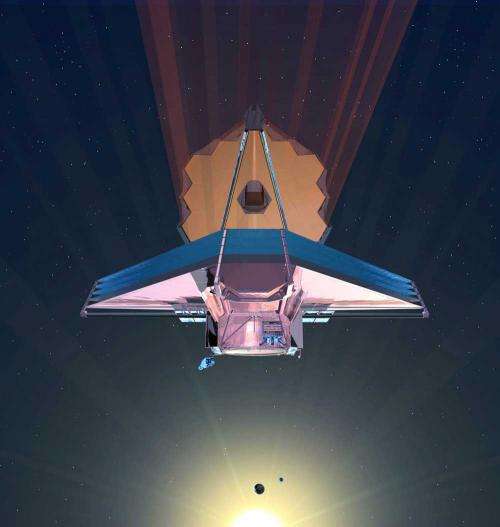Student shows James Webb Space Telescope will be able to observe afterglows from earliest gamma-ray bursts

A 25-year-old PhD student from Perth, Australia, has had his research recognized by NASA's Space Telescope Science Institute for its contribution to their upcoming James Webb Space Telescope (JWST), to be launched in 2018.
Damien Macpherson, from The University of Western Australia node of the International Centre for Radio Astronomy Research (ICRAR), has shown that astronomers could observe the earliest stars in the universe for the first time when they explode as a so-called gamma-ray burst, producing an afterglow of light that could be detected by the JWST.
"We found that the JWST will be able to observe these gamma-ray burst afterglows for at least 55 days after the initial bright flash has died down, something that's really good news for NASA and the telescope," Macpherson said. Gamma-ray bursts from the first stars should be the brightest objects in the entire Universe, only lasting a matter of seconds, but sending out as much energy in that time as the Sun will in its entire life.
But there's a catch...
"Because the first stars in the universe are so incredibly distant, the gamma-ray burst afterglows are not visible by even the best ground based telescopes," Macpherson said.
In 2018, NASA, the European Space Agency and the Canadian Space Agency will launch the James Webb Space Telescope into orbit. It will have a mirror area approximately seven times larger than the Hubble Space Telescope, making it able to see further into space and detect fainter objects.
"Our work predicts that the James Webb Space Telescope will have a chance of seeing the first gamma-ray burst afterglow from the earliest stars in the universe within five years of its launch," Macpherson said.
NASA's Space Telescope Science Institute invited Macpherson to present his research as part of their JWST science highlights, a collection of published astronomy research related to the telescope.
More information: Paper: Macpherson, D.; Coward, D. M.; Zadnik, M. G. "The Potential for Detecting Gamma-Ray Burst Afterglows from Population III Stars with the Next Generation of Infrared Telescopes," 2013, The Astrophysical Journal, Volume 779, Issue 1, article id. 73: dx.doi.org/10.1088/0004-637X/779/1/73 , On Arxiv: arxiv.org/abs/1310.4940
Journal information: Astrophysical Journal , arXiv
Provided by ICRAR





















